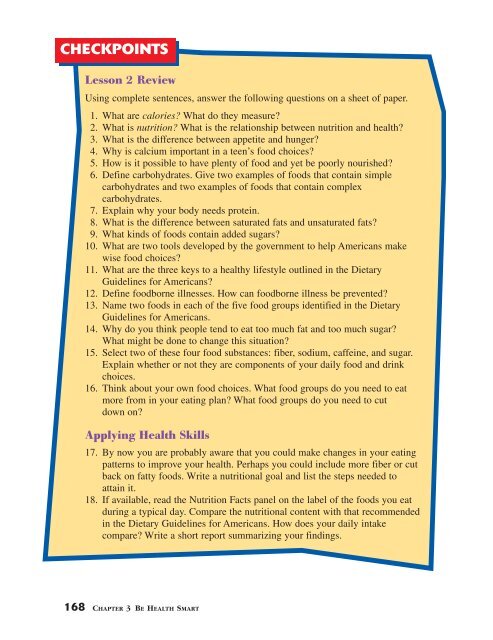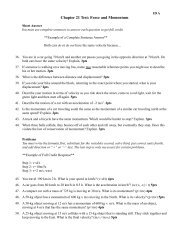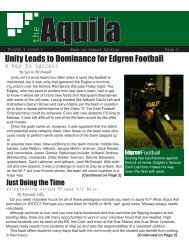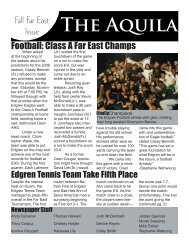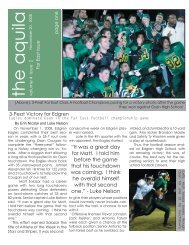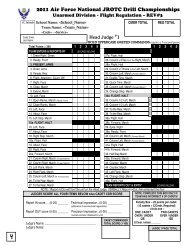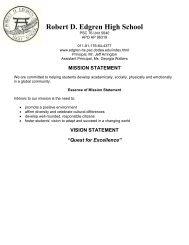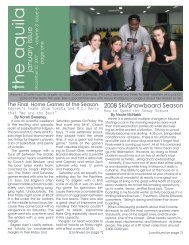AFJROTC Student Workbook CH03_Lesson_2 - Edgren High ...
AFJROTC Student Workbook CH03_Lesson_2 - Edgren High ...
AFJROTC Student Workbook CH03_Lesson_2 - Edgren High ...
You also want an ePaper? Increase the reach of your titles
YUMPU automatically turns print PDFs into web optimized ePapers that Google loves.
<strong>CH03</strong>_LE1 6/28/05 4:19 PM Page 168<br />
CHECKPOINTS<br />
<strong>Lesson</strong> 2 Review<br />
Using complete sentences, answer the following questions on a sheet of paper.<br />
1. What are calories What do they measure<br />
2. What is nutrition What is the relationship between nutrition and health<br />
3. What is the difference between appetite and hunger<br />
4. Why is calcium important in a teen’s food choices<br />
5. How is it possible to have plenty of food and yet be poorly nourished<br />
6. Define carbohydrates. Give two examples of foods that contain simple<br />
carbohydrates and two examples of foods that contain complex<br />
carbohydrates.<br />
7. Explain why your body needs protein.<br />
8. What is the difference between saturated fats and unsaturated fats<br />
9. What kinds of foods contain added sugars<br />
10. What are two tools developed by the government to help Americans make<br />
wise food choices<br />
11. What are the three keys to a healthy lifestyle outlined in the Dietary<br />
Guidelines for Americans<br />
12. Define foodborne illnesses. How can foodborne illness be prevented<br />
13. Name two foods in each of the five food groups identified in the Dietary<br />
Guidelines for Americans.<br />
14. Why do you think people tend to eat too much fat and too much sugar<br />
What might be done to change this situation<br />
15. Select two of these four food substances: fiber, sodium, caffeine, and sugar.<br />
Explain whether or not they are components of your daily food and drink<br />
choices.<br />
16. Think about your own food choices. What food groups do you need to eat<br />
more from in your eating plan What food groups do you need to cut<br />
down on<br />
Applying Health Skills<br />
17. By now you are probably aware that you could make changes in your eating<br />
patterns to improve your health. Perhaps you could include more fiber or cut<br />
back on fatty foods. Write a nutritional goal and list the steps needed to<br />
attain it.<br />
18. If available, read the Nutrition Facts panel on the label of the foods you eat<br />
during a typical day. Compare the nutritional content with that recommended<br />
in the Dietary Guidelines for Americans. How does your daily intake<br />
compare Write a short report summarizing your findings.<br />
168 CHAPTER 3 BE HEALTH SMART


